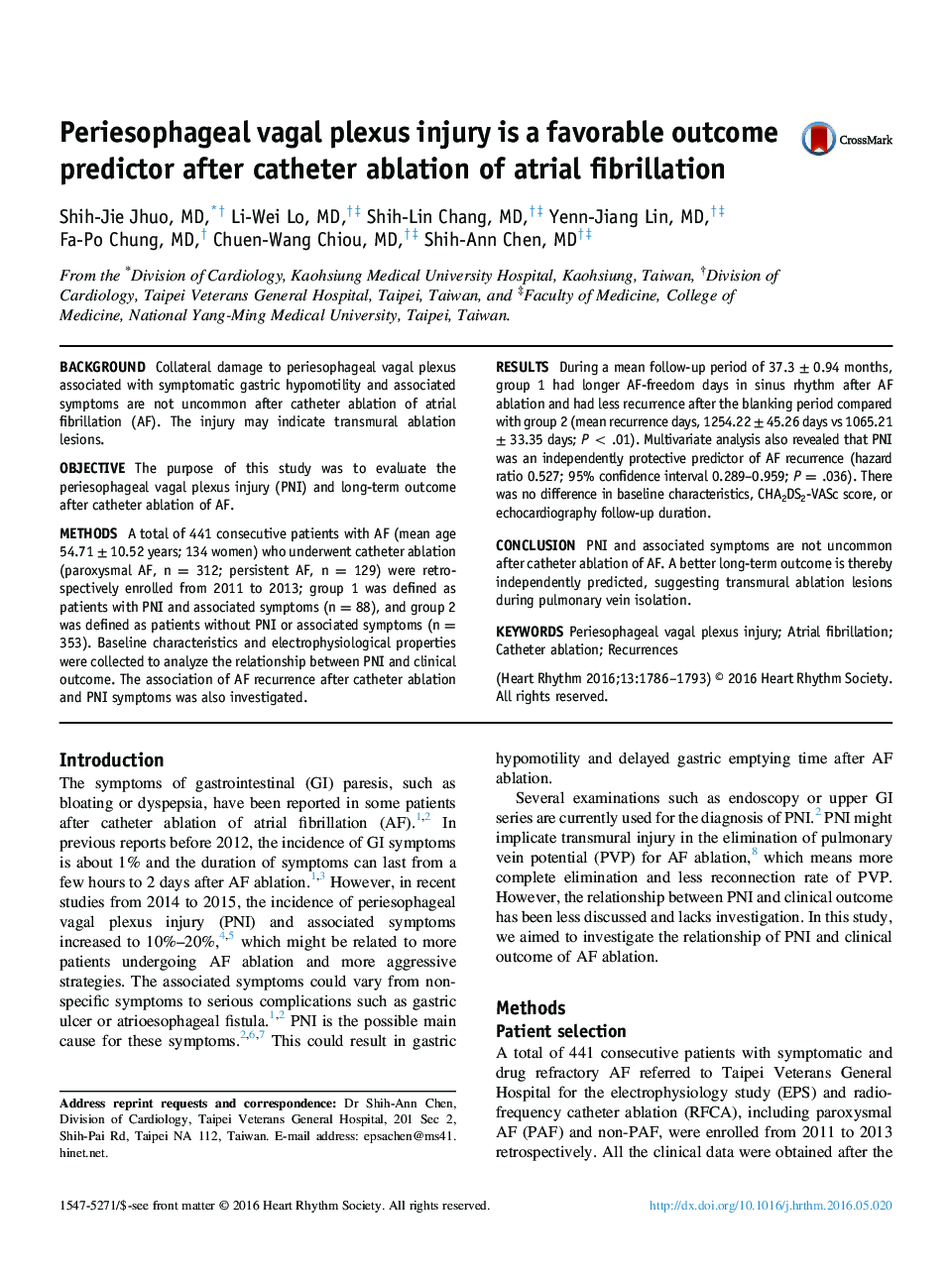| Article ID | Journal | Published Year | Pages | File Type |
|---|---|---|---|---|
| 2921668 | Heart Rhythm | 2016 | 8 Pages |
BackgroundCollateral damage to periesophageal vagal plexus associated with symptomatic gastric hypomotility and associated symptoms are not uncommon after catheter ablation of atrial fibrillation (AF). The injury may indicate transmural ablation lesions.ObjectiveThe purpose of this study was to evaluate the periesophageal vagal plexus injury (PNI) and long-term outcome after catheter ablation of AF.MethodsA total of 441 consecutive patients with AF (mean age 54.71 ± 10.52 years; 134 women) who underwent catheter ablation (paroxysmal AF, n = 312; persistent AF, n = 129) were retrospectively enrolled from 2011 to 2013; group 1 was defined as patients with PNI and associated symptoms (n = 88), and group 2 was defined as patients without PNI or associated symptoms (n = 353). Baseline characteristics and electrophysiological properties were collected to analyze the relationship between PNI and clinical outcome. The association of AF recurrence after catheter ablation and PNI symptoms was also investigated.ResultsDuring a mean follow-up period of 37.3 ± 0.94 months, group 1 had longer AF-freedom days in sinus rhythm after AF ablation and had less recurrence after the blanking period compared with group 2 (mean recurrence days, 1254.22 ± 45.26 days vs 1065.21 ± 33.35 days; P < .01). Multivariate analysis also revealed that PNI was an independently protective predictor of AF recurrence (hazard ratio 0.527; 95% confidence interval 0.289–0.959; P = .036). There was no difference in baseline characteristics, CHA2DS2-VASc score, or echocardiography follow-up duration.ConclusionPNI and associated symptoms are not uncommon after catheter ablation of AF. A better long-term outcome is thereby independently predicted, suggesting transmural ablation lesions during pulmonary vein isolation.
